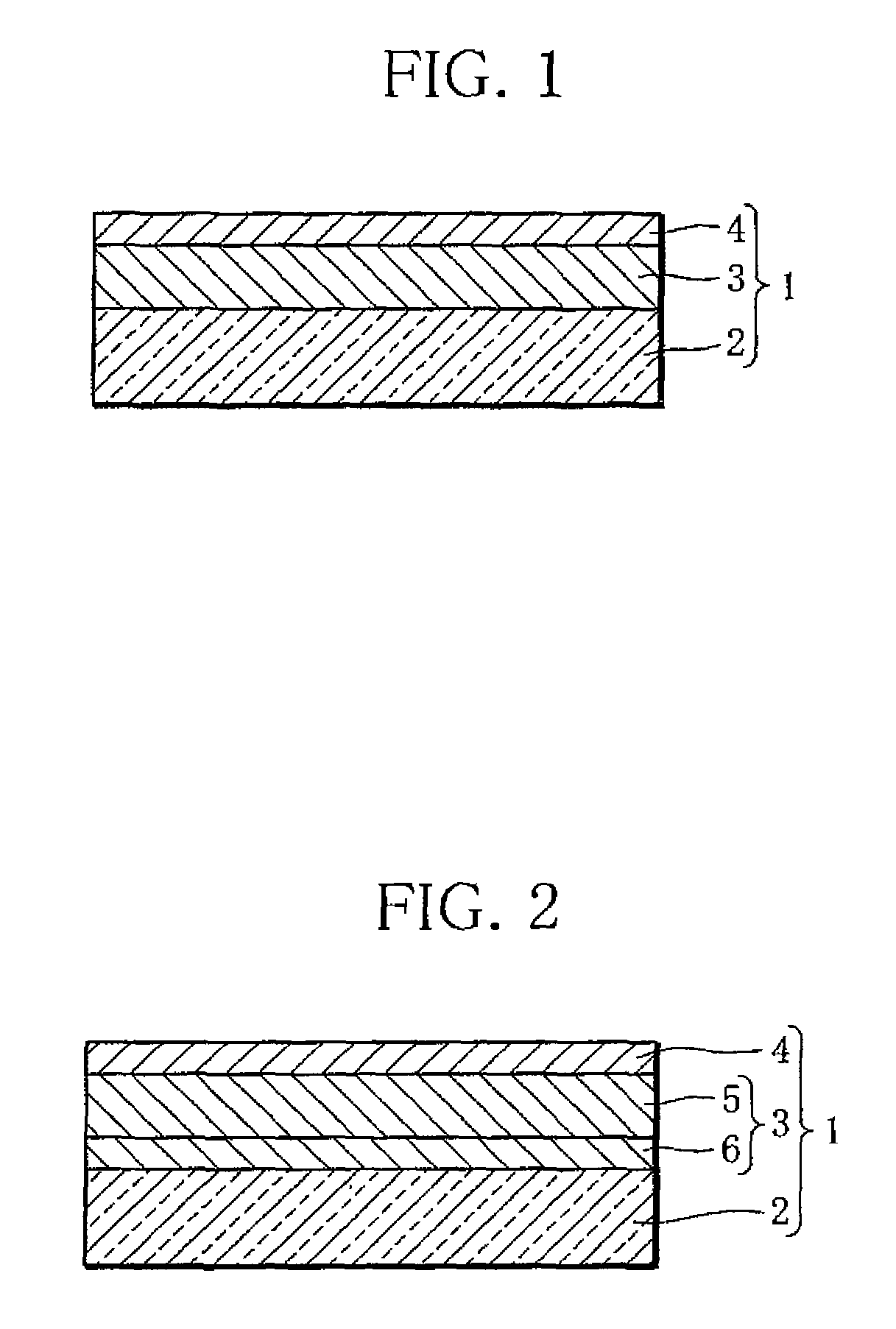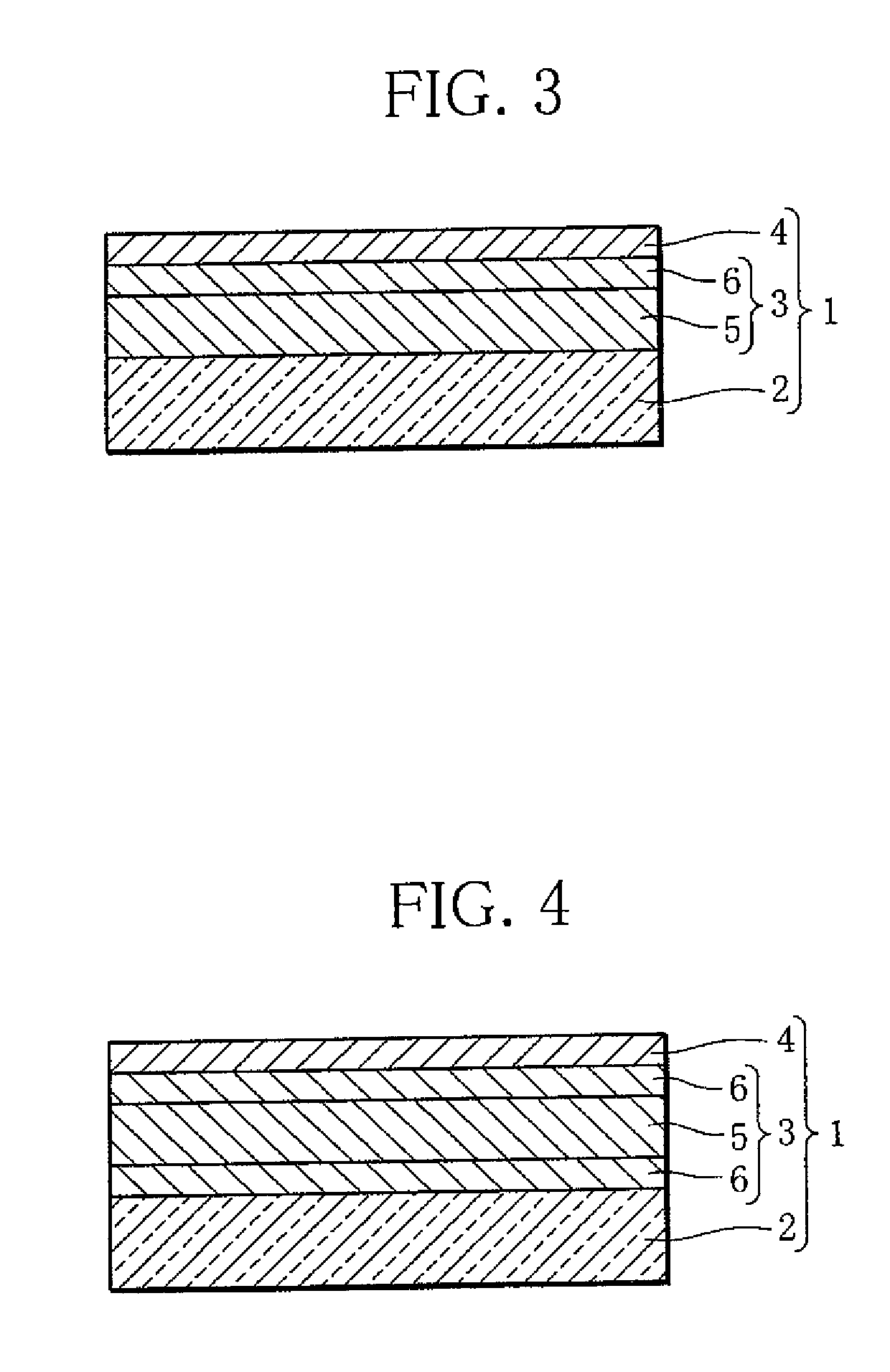Hydrogen-absorbing alloy and hydrogen sensor using the alloy
a hydrogen sensor and alloy technology, applied in chemical analysis using combustion, specific gravity measurement, mechanical means, etc., can solve the problem of shortening the time required, and achieve the effect of speeding up dehydrogenation, expediting dehydrogenation, and speeding up dehydrogenation
- Summary
- Abstract
- Description
- Claims
- Application Information
AI Technical Summary
Benefits of technology
Problems solved by technology
Method used
Image
Examples
Embodiment Construction
[0033]As illustrated in FIG. 1, a hydrogen sensor 1 according to the present invention includes a substrate 2, a hydrogen reaction layer 3, and a first catalyst layer 4.
[0034]The substrate 2 is a transparent plate member such as an acrylic plate, a plastic plate, a transparent sheet, or a glass plate.
[0035]The hydrogen reaction layer 3 contains an Mg—Ni-based alloy as well as a Zr—Ti-based alloy. An Mg—Ni-based alloy is a material capable of absorbing and desorbing hydrogen and switchable between a transparent state and a mirror state (metallic state) or an intermediate state. Instead of the Mg—Ni-based alloy, a thin film of a rare earth element such as yttrium, lanthanum or the like, a thin film of a rare earth metal-magnesium alloy, a thin film of a magnesium-transition metal alloy, or a thin film of magnesium may be used. The Mg—Ni-based alloy is especially preferable because of its low material cost and excellent optical characteristics. The hydrogen reaction layer 3 is deposite...
PUM
| Property | Measurement | Unit |
|---|---|---|
| flow rate | aaaaa | aaaaa |
| thickness | aaaaa | aaaaa |
| thickness | aaaaa | aaaaa |
Abstract
Description
Claims
Application Information
 Login to View More
Login to View More - R&D
- Intellectual Property
- Life Sciences
- Materials
- Tech Scout
- Unparalleled Data Quality
- Higher Quality Content
- 60% Fewer Hallucinations
Browse by: Latest US Patents, China's latest patents, Technical Efficacy Thesaurus, Application Domain, Technology Topic, Popular Technical Reports.
© 2025 PatSnap. All rights reserved.Legal|Privacy policy|Modern Slavery Act Transparency Statement|Sitemap|About US| Contact US: help@patsnap.com



